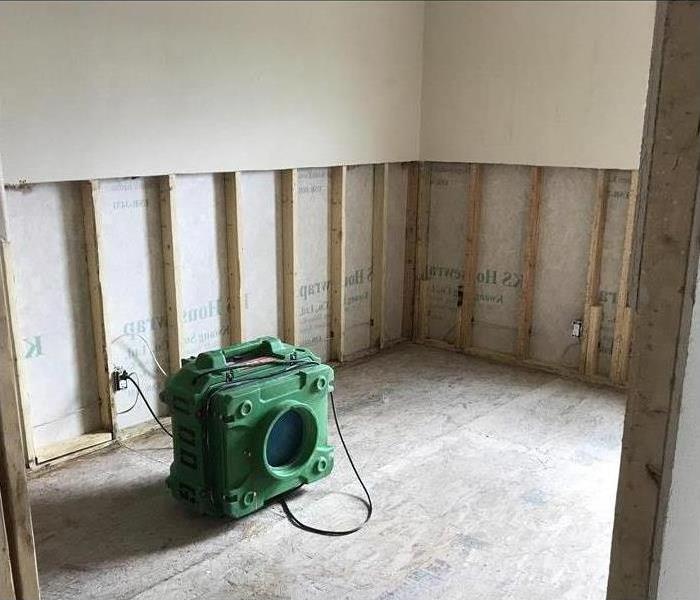How To Prevent Mold Growth After a Flood
5/26/2022 (Permalink)
How To Avoid Mold Growth After a Flood
Flooding is a risk that every business should be aware of and plan for. Floods aren't always the result of natural disasters. A water main break outside of your business in New Sweden, TX, can do a lot of damage in a short amount of time. Water damage can also occur as a result of a burst pipe or a broken water heater. Cleaning up from flooding of any kind can be overwhelming, but there are some steps to take to expedite the process and prevent mold, which can begin to grow as soon as 24-48 hours after a flood.
1. Remove Standing Water
The first step is to remove standing water. Depending on the quantity, you may be able to do this with a mop and bucket or shop vacuum, or you may need to rent a pump. The longer water stands, the more damage it does to your business. Call in reinforcements (neighbors, coworkers, family) to help until a professional can get to you.
2. Toss Waterlogged Materials
From carpet to drywall, most waterlogged material should be disposed of. While there are some things that can be salvaged, such as hardwoods, most items found in standing water should be considered contaminated and tossed.
3. Dry Everything Thoroughly
One way to ensure mold prevention is to dry everything thoroughly. Water damage can go deep into subflooring and walls, so keep dehumidifiers and fans running. Prop up furniture that can't be removed so that as little surface area is touching the ground as possible.
4. Work with a Professional
Always trust a commercial remediation expert to give you the final say as to the condition of your property. They will be able to check for moisture pockets in hard-to-reach places where mold growth is likely to occur and provide remediation and prevention tips.
The quickest way to recover from water damage is fast action. Begin the cleanup process as soon as possible to prevent long-term damage to your business.




 24/7 Emergency Service
24/7 Emergency Service
